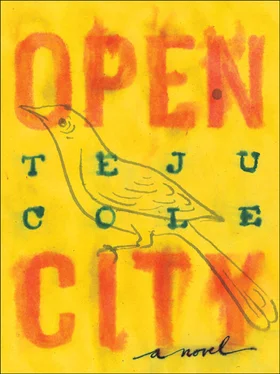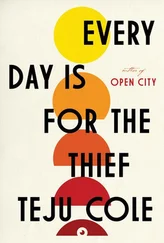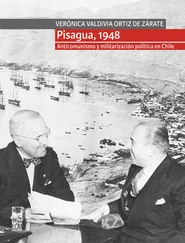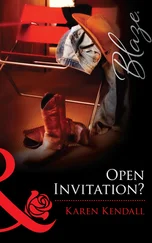I expressed my delight in his ramblings. But as I read out stories about satellite radio and about civil unions in New Jersey, I became like one who was no longer there. My mind picked up an earlier thread in the conversation. When Professor Saito asked me not to stop at the second paragraph but to read the civil unions story all the way to the end, I did so, fully understanding the printed words but without engaging with them. Afterward, we discussed the story, and that, too, I did at a certain distance. It was a kind of party trick, to continue a conversation of this kind and remain the whole while perfectly distracted. It was like a film in which the soundtrack and the images were out of sync. Professor Saito expressed the view that the advances in equal rights for gays were welcome, and that, viewed from his lifetime of following such advances, the process looked inexorable. There was much to celebrate. But, he said, it has been slow. While I am happy for these couples now, I have a sense of how wasteful the struggle has been. It has been much too difficult to pass legislation of this kind. Future generations will perhaps wonder what took us so long. I asked him why New York State did not take the lead in passing such laws. Too many conservatives in Albany, he said, the political will isn’t there to make it happen. It’s all those people in the rural parts of the state, Julius, they think about these things differently.
I knew that Professor Saito had cared for a long-term partner, a man who had later died. I came by this information not through a conversation with him, but from a biographical profile I had seen in the alumni magazine at Maxwell. I had had conversations with him for three years without any idea about this vital part of his life and, when I did find out, there had been no reason to bring it up in conversation. But at no time did I have the impression that Professor Saito was trying to avoid talking about his sexuality. Indeed, there were two occasions on which it had come up. Once he had mentioned, in the course of saying something else, that he had known about his sexual orientation since he was three years old. The second time was, now that I think of it, a kind of bookend to the first: his prostatectomy, he had told me, had effectively killed off any sexual urges that had survived the other ravages of old age. But the strange thing he found, he had said at the time, was that this freed him to have more tender and uncomplicated relationships with people.
Professor Saito was like this, especially after his retirement: a curious combination of reticence and frankness. I wish I had asked what his late partner’s name was. He would have told me. Perhaps some of the artifacts on display in the apartment — the Meissen porcelain in the curio cabinet, the Javanese puppets, the row of books on modern poetry — were the legacy of this other man, with whom Professor Saito had spent so much of his life. Or perhaps there had been a series of partners, each important in his own way. But in spite of myself, unable to be fully present to our conversation, I could not lead it in this new direction. I simply nodded, smiled, and spoke about other things. He noticed, perhaps, that my attention was flagging, and he said, as if he were waking someone who had fallen asleep, You’re still young, Julius. You must be careful about closing too many doors. I had no idea what he was talking about, and I simply nodded when he said this, and watched his spidery hands slowly dancing around each other in that gloomy room.
The bedbugs were on my mind. New Yorkers had begun to speak more often about these tiny creatures in the past two years. The conversations, as befitted a troublesome occurrence in the private arena, had remained private, and the bedbugs were having an unlikely success. They were the unseen enemy that carried on their work, even as false alarms were raised about the West Nile virus, avian flu, and SARS. In the age of the dramatic epidemic, it was the old-fashioned bedbug, a minuscule red-coated soldier, that was least deterred. Of course, other illnesses were much more serious, and more of a drain on public resources. AIDS remained a devastating problem, especially for the poor, and for people who lived in the poorer countries. Cancer, heart disease, and emphysema were not pandemic, but were nevertheless of great importance among the causes of mortality. Even as the terms of transnational conflicts had changed, a similar shift was happening in public health, where, too, the enemies were now vague, and the threat they posed constantly shifting.
But bedbugs were not fatal, and were happy to stay out of the headlines. They were hard to fumigate into oblivion, and their eggs were almost impossible to kill. They did not discriminate on the basis of social class and, for that reason, were embarrassing. An infection in a wealthy home was just as likely, and just as difficult to get rid of, as one among the poor. Hotels at all levels of luxury suffered. If you had them, you had them, and ridding yourself of them permanently was difficult. And in that moment, as I contemplated these ideas, I suddenly felt sorrowful for Professor Saito. His recent encounter with the bedbugs troubled me more than what he had suffered in other ways: racism, homophobia, the incessant bereavement that was one of the hidden costs of a long life. The bedbugs trumped them all. The feeling was subconscious, contemptible. Had it been put to me so baldly at the time, I would have denied it. But it was there, an example of how an inconvenience can, because of one’s proximity to it, take on a grotesque aspect.
These tiny, flat creatures, which had sought out human blood since before Pliny’s time, were involved in a kind of low-grade warfare, a conflict at the margins of modern life, visible only in speech. At the end of the afternoon, when I left Professor Saito’s apartment, I decided to walk north through Central Park. The snow from three days previously had not melted. In the frigid air, it had hardened to create smooth, low hills across the fields. I kept to a snow-covered road that ran along a sturdy old wall. Footprints were visible, but there was no one else in sight. The light was so diffuse that almost no shadows were cast on the snow, and this gave one the feeling of levitation: white light above and white below. A flock of tiny birds — they might have been starlings — swirled around a tree in the distance. I had the distinct impression that the tangled branches, and the birds that wove expertly in and out of them, were made of the same dun brown substance, the latter different only because they were in an active state. At any moment, I thought, the jagged little branches would unfold their hidden wings and the entire crown of the tree would become a living cloud. The surrounding trees, too, would lose their heads, leaving sentrylike stumps behind, and in the sky above the park there would be a massive canopy of starlings. I walked along this soothing white road for a long time, until the cold cut through my gloves and scarf and compelled me to leave the park and take the subway the rest of the way home.
Later that night, looking through my medical textbooks for more on the bedbugs, I found only dry descriptions of etiologies, life cycles, and therapies. Steam laundering and cyanogas fumigation were discussed at length, but none of this got at what disconcerted me about these creatures. But by a remarkable chance, I found among my books a volume of field reports on epidemiology from the early twentieth century, one in a stack of outdated books that had been discarded by Dr. Martindale at his lab. I had idly picked up a few of those books without really looking at them, but now I found the report written by Charles A. R. Campbell in 1903, and in his writing I got a sense of the disgust and awe in which Cimex lectularius was then held.
Читать дальше












